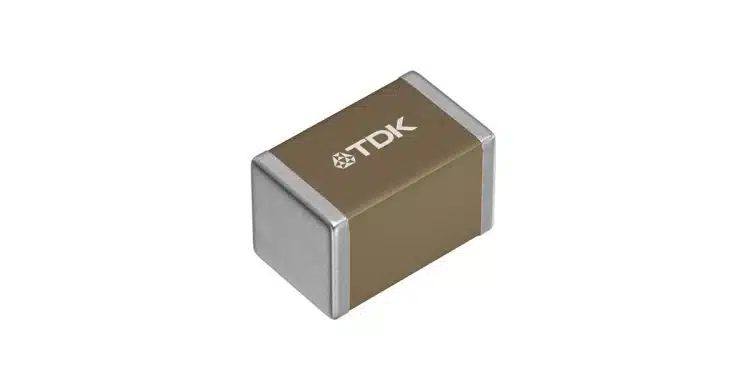TDK Corporation has expanded its CGA series of multilayer ceramic capacitors (MLCCs) to 2.2μF in 2012 size (2.0 x 1.25 x 1.25mm – L x W x T) and 4.7μF in 3216 size (3.2 x 1.6 x 1.6 mm – L x W x T), with the industry’s highest capacitance, as 100V products for automotive applications.
Mass production of the product series began this month, March 2024.
Many automotive manufacturers are adopting a 48V electrical architecture for several reasons, including automotive fuel efficiency (power efficiency).
This has increased the demand for miniaturized high-capacitance 100V products, which are useful for smoothing and decoupling in power lines.
Thanks to optimized product design, the 100V products of the CGA series achieve smaller size and higher capacitance. TDK will expand its lineup further to meet customers’ needs.
| Type | Outer dimensions [mm] | Temperature characteristics | Rated voltage [V] | Capacitance [μF] |
|---|---|---|---|---|
| CGA4J1X7R2A225K125AC | 2.0 x 1.25 x 1.25 | X7R | 100 | 2.2 |
| CGA5L1X7R2A475K160AC | 3.2 x 1.6 x 1.6 | X7R | 100 | 4.7 |
Features
- Higher capacitance of 2.2μF in 2012 size and 4.7μF in 3216 size enables space-saving designs and a reduction in number of components
- High reliability qualified based on AEC-Q200
Applications
- Smoothing and decoupling of the power lines for various kinds of 48V products for automobiles































